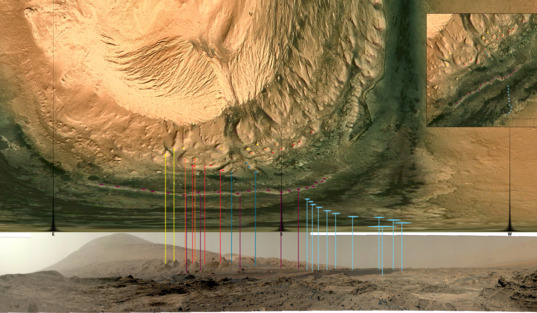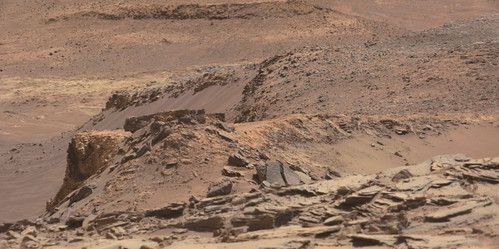The NAVCAM travel animation for Sol 1110 is
1921 frames and does seem to suggest a significant increase in tilt toward the end.
Here's a small preview of the left NAVCAM's view:
Click to view attachmentAnd here is the full-size (512x256) stereo-pair animation for
Parallel and
Cross-Eye viewing. File sizes are 3.2 MiB each.
Edit: And the Sol 1108 NAVCAM travel animation is 13 frames.
Here's a small preview of the left NAVCAM's view:
Click to view attachmentAnd here is the full-size (512x256) stereo-pair animation for
Parallel and
Cross-Eye viewing. File sizes are 2 MiB each.
Edit: Added two missing frames from the Sol 1110 animation and changed links to point to corrected versions.
Edit: And the Sol 1107 NAVCAM travel animation is 27 frames.
Here's a small preview of the left NAVCAM's view:
Click to view attachmentAnd here is the full-size (512x256) stereo-pair animation for
Parallel and
Cross-Eye viewing. File sizes are 4.2 MiB each.
Edit: And, since the viewpoint at the end of Sol 1107 is the same as the beginning of Sol 1108, I put together a combined Sol 1107-8 NAVCAM travel animation, 40 frames in length.
Here's a small preview of the left NAVCAM's view:
Click to view attachmentAnd here is the full-size (512x256) stereo-pair animation for
Parallel and
Cross-Eye viewing. File sizes are 6.2 MiB each.








